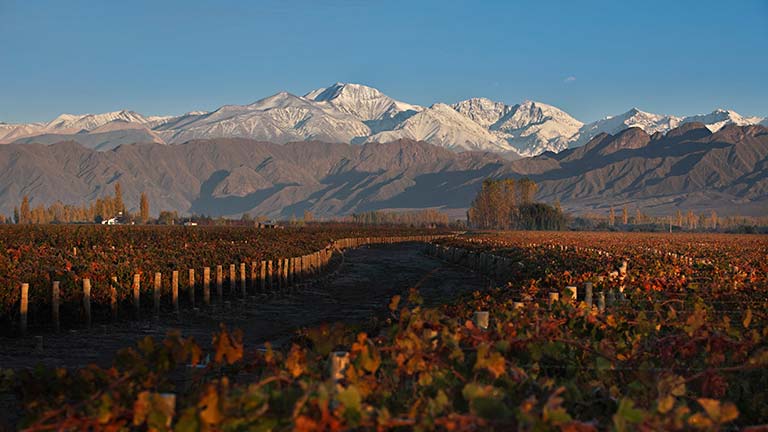
Many grapes flourish in their native environments but flounder elsewhere. For example, Nebbiolo can be spectacular in Italy’s Piedmont but rarely does well in other regions. Not so Malbec, which is indigenous to Southwest France. While it can make good wines in France, in Argentina Malbec is a superstar.
- Cahors, in southwest France, is considered Malbec’s traditional home. Cahors wines contain a minimum of seventy percent Malbec (known there as “Côt”) and tend to be tannic, harsh wines with subdued fruit. Loosely translated, Malbecs means “bad mouth” in French – need I say more?
- Malbec was once an important part of the “Bordeaux blend,” but a severe frost in 1956 killed most of the Bordeaux Malbec vines, which generally were replaced by Merlot. Malbec remains one of the five major grapes authorized for the Bordeaux blend, but it’s seldom used these days.
Malbec was introduced to Argentina in 1853, with cuttings from Bordeaux, and has become the country’s signature red wine. It turns out that Argentina, particularly Mendoza, has the ideal environment for Malbec. The vines are grown in the foothills of the Andes mountains, where they are exposed to intense sunshine, resulting in thicker skins that produce intense wines. The altitude also causes a greater day - night ("diurnal") temperature variation, resulting in a longer ripening period and more flavor concentration. Malbec is also less susceptible to disease in the drier mountain environment.
- Argentinian Malbecs tend to be soft, rich, palate-coating wines with prominent ripe fruits, in contrast to the harsher, more austere French Malbecs. Often people who love Argentinian Malbecs are put off by the French versions.
- Unlike France, where Malbec is generally used as a blending component, Argentina often produces pure Malbec or Malbec dominant wines.
Argentina produces some nice Malbecs in the $10 - $20 range, as well as some superb, more expensive versions. Top quality Malbecs fall into the $50 to $100+ range. Two examples in the $100+ category that won’t disappoint are the Catena Zapata Malbec Argentino and Achaval-Ferrer Finca Bella Vista. As we discovered on a trip to Buenos Aeries, however, the Argentinians seem to keep some of their very best Malbecs for themselves rather than sell them on the export market.
Our wine of the week is a 2017 Trapiche Broquel Malbec ($12 retail). This is a simple, straightforward, enjoyable wine. There’s nothing complex about it – just pair it up with some good beef or barbecue, sit back and enjoy. It’s produced in Mendoza from 100 percent Malbec, and aged in oak for fifteen months. It has black fruit, spice and earthy notes and a hint of smoke. On the palate it’s full bodied and has ripe, pleasant tannins. The 14 percent alcohol level is noticeable but not overpowering.
- Some other pairings besides grilled beef include beef stews, pasta with tomato or mushroom sauces and hearty cheeses – try a blue cheese or a Spanish manchego.
- The Broquel is widely available, but if you can’t find it some other good producers that make comparable wines include Catena Zapata, Altos Los Hormigos, Achaval Ferrer and Norton.
Cheers!
